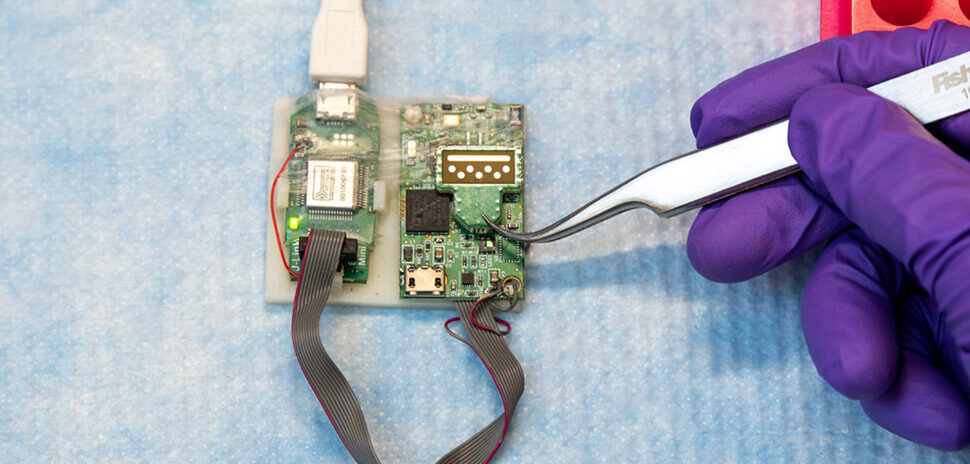As we’ve witnessed with the ongoing COVID-19 pandemic, overcrowding in hospitals can be a costly and concerning issue that comprises quality of patient care and experience. A new study from The University of Texas at Dallas aims to investigate that problem—and see whether or not telemedicine could be the answer.
In the recently published study, Dr. Shujing Sun, an assistant professor of information systems in the Naveen Jindal School of Management, and her colleagues investigated how telemedicine could serve as a general solution to the delivery of ER care.
“Although the ER seems to be an unlikely place for telemedicine to play its role, it is happening, and in fact, is very promising,” Sun said. “We believe our findings are critical for ERs, considering the unique setting of unscheduled arrivals and unpredictability of patient traffic.”
Sun sees an overcrowding problem that’s mainly driven by an imbalance between increasing patient flow and the shortage of emergency room capacity. ER visits have been rapidly rising in recent years, but that’s coupled with critical shortages of emergency care physicians, experts say.
So, she aimed to examine how remote healthcare services, delivered via telecommunications technology, could reduce congestion. According to Sun, telemedicine has been gradually adopted in recent years. That’s been especially apparent in hospitals nationwide throughout the pandemic, as many have been forced to turn to video or online chats to receive clinical information, care, and more.
But, she says, there isn’t a lot of evidence on the impact of its telemedicine’s applications within an ER setting.
“While the ER is supposed to be a safety net of the healthcare system, the overcrowding problem has strained this safety net and posits various threats,” Sun, the lead author of the study said in a UTD blog post. “For example, long waiting times and treatment delays cause adverse patient outcomes, such as high readmission and mortality rates. They also increase financial costs, reduce patients’ satisfaction and impair physician efficiency.”
The researchers used a data set that covered all emergency visits in New York from 2010 to 2014. They then found that the adoption of telemedicine in the ER significantly shortened average length of stay and wait time, according to UTD.
Overall, the results showed that ER telemedicine can improve an on-call physician’s efficiency, leading to shorter wait times for patients. This is mainly because transportation is vastly decreased a workflow is improved.
Sun says to think of it like this: When there’s an influx of emergency patients, on-site nurse practitioners or physician assistants can use telemedicine to treat those with minor conditions while off-site physicians supervise remotely. This is vital, as most hospitals require an attending physician to be present when patients are seen.
Enabling telemedicine allows on-call physicians to work from their office without traveling to the ER, which can in turn speed up lab work and a physician’s more administrative tasks. It’s also helpful when there’s a shortage of on-site physicians or a hospital lacks expertise in an area—through flexible resource allocation, the study showed that telemedicine can significantly improve ER care delivery.
But, Sun does note that “the improvement in care delivery does not come at the expense of care quality or patient cost.”
“When more and more hospitals join the resource-sharing network, telemedicine will have great potential to rebalance the geographically imbalanced health care resources and reduce health care access disparity,” she said.
The UTD team hopes the study will provide healthcare decision-makers with a “careful examination of the causal implications of ER telemedicine on care delivery efficiency, care quality, and medical expenditure.”
The COVID-19 pandemic has only heightened the need for a study of this kind, the researchers say, and now is the best opportunity to take a more in-depth look. According to Sun, telemedicine has already proven how it can protect patients and providers without compromising healthcare access.
She plans to continue the research with the intent to better understand how and telemedicine’s effects in various healthcare situations.
“Due to the lack of evidence and the inflexibility of reimbursement policy, the adoption rate of telemedicine in the ER remains low and is growing only slowly,” Sun said. “Policymakers can incentivize adoption of ER telemedicine by reducing regulatory barriers, such as lifting restrictions regarding cross-state practitioners’ licensure and providing better reimbursement coverage.”
![]()
Get on the list.
Dallas Innovates, every day.
Sign up to keep your eye on what’s new and next in Dallas-Fort Worth, every day.

































